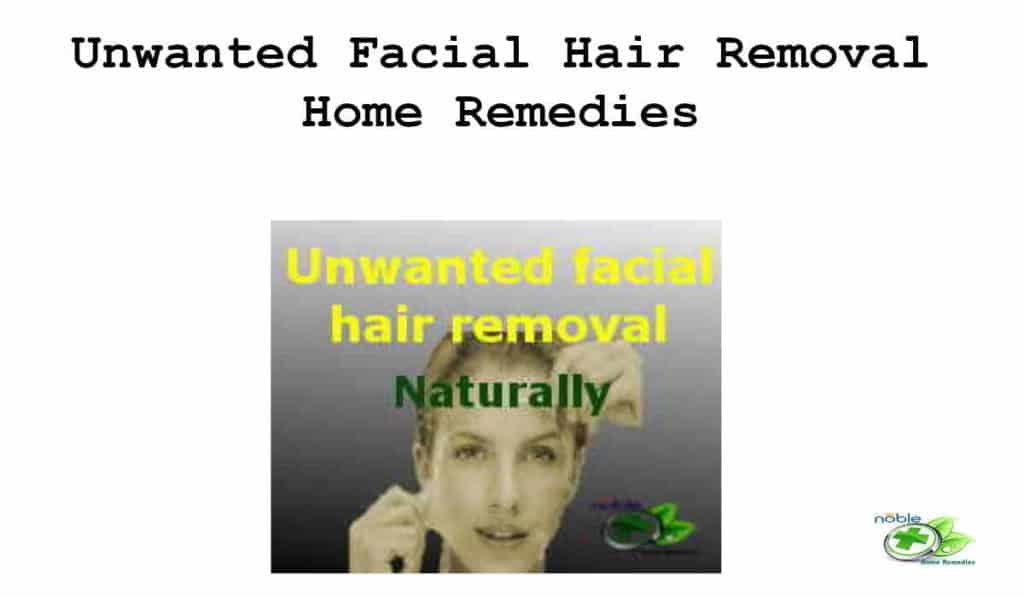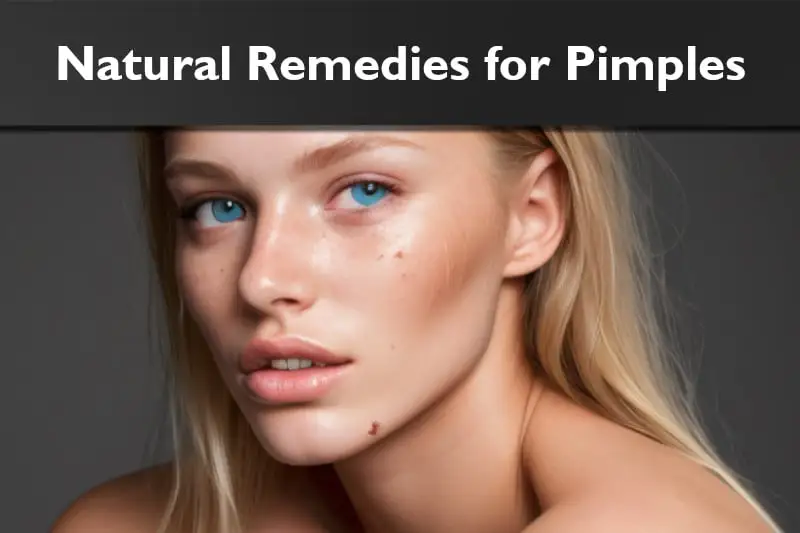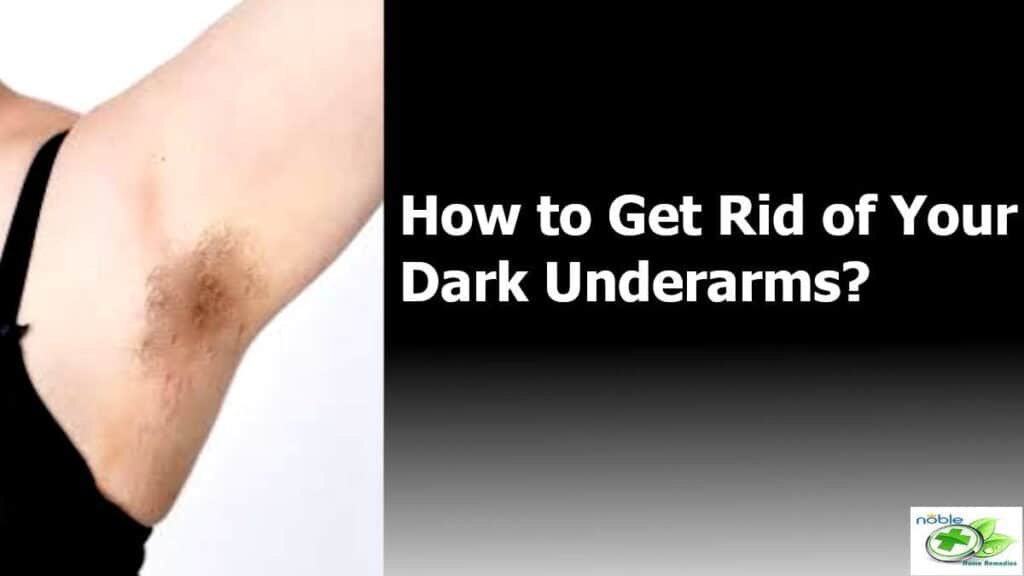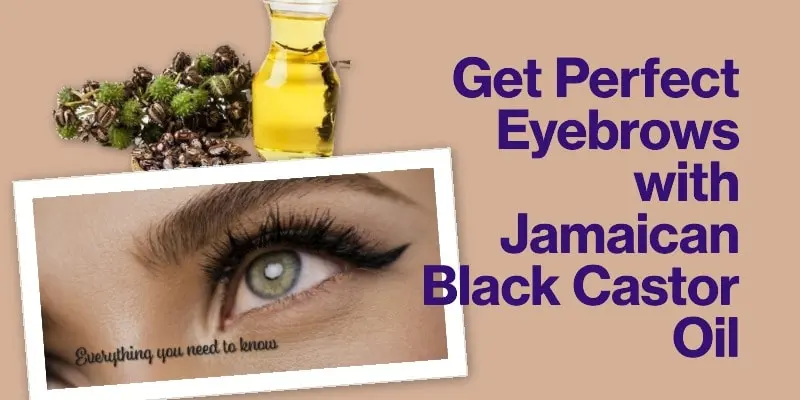Skincare Routine Tips for Acne: Pimple Fighting Skincare
Acne – a word that resonates with countless individuals battling those unwelcome blemishes, be it occasional zits or persistent breakouts. If you’ve ever struggled with acne, you know that it’s more than just a minor skin concern; it can significantly impact self-confidence and overall well-being. This is where a well-structured skincare routine comes to the rescue.

In this comprehensive guide of “Skincare Routine Tips for Acne”, we’re diving specifically tailored to those dealing with acne-prone skin. We’ll explore the crucial role of a skincare routine in managing acne, and we’ll provide you with the essential tips and strategies you need to build a pimple-fighting regimen that works for you.
First things first, let’s understand why a skincare routine is pivotal in the battle against acne. Acne isn’t just a superficial concern; it’s a complex skin condition that can be influenced by various factors, including genetics, hormones, and environmental triggers. It requires a thoughtful, consistent approach to keep it in check.
If you’ve ever experienced acne, you’re well aware of the challenges it poses. The physical discomfort, the emotional toll, and the frustration of trying product after product in search of a solution can be overwhelming. The good news is that with the right knowledge and a well-crafted skincare routine, you can take control of your skin’s destiny.
So, whether you’re a teenager dealing with the ups and downs of hormonal acne, an adult facing persistent breakouts, or simply someone who wants to maintain clear and radiant skin, this guide is for you. Let’s get started on the path to building a pimple-fighting skincare routine that will help you face the world with confidence.
Understanding Acne: Types, Causes, and More
Before diving headfirst into creating your pimple-fighting skincare routine, it’s essential to have a clear understanding of acne. Acne isn’t a one-size-fits-all condition; it’s a complex skin issue with various forms, triggers, and underlying causes.
Types of Acne
- Acne manifests in several forms, each with its distinct characteristics. Here are some of the most common types you might encounter:
- Whiteheads (Closed Comedones): These small, raised bumps occur when hair follicles become clogged with oil and dead skin cells. The pore remains closed, appearing as a white or flesh-colored bump on the skin’s surface.
- Blackheads (Open Comedones): Blackheads are similar to whiteheads but have an open pore, allowing the trapped material to oxidize and turn black. Contrary to popular belief, the black color isn’t due to dirt but rather the oxidation process.
- Papules: Papules are small, red, and tender bumps that form when hair follicles become inflamed. They can be painful and may not have a visible center like whiteheads or blackheads.
- Pustules: These are similar to papules but have a white or yellow center filled with pus. Pustules are often surrounded by redness and can be quite noticeable.
- Nodules: Nodules are large, painful, solid lumps beneath the surface of the skin. They result from deeper clogs in the hair follicles and can be particularly stubborn and painful.
- Cysts: Cysts are the most severe form of acne and typically the most painful. They are large, pus-filled lumps that can cause significant scarring if not treated properly.
Causes of Acne
Understanding the root causes of acne is crucial for tailoring your skincare routine effectively. Here are some of the key factors that contribute to acne:
- Hormones: Hormonal fluctuations, especially during puberty, pregnancy, and menstruation, can stimulate the sebaceous glands to produce excess oil. This increased oil production can lead to clogged pores and acne breakouts.
- Genetics: Genetics plays a significant role in determining your susceptibility to acne. If your parents or close relatives had acne, you may be more prone to it as well.
- Diet: While the relationship between diet and acne is complex, certain foods, such as high-glycemic-index carbohydrates and dairy products, have been linked to acne flare-ups in some individuals.
- Excessive Oil Production: Overproduction of sebum (skin oil) can clog pores and create an ideal environment for acne-causing bacteria to thrive.
- Bacteria: The presence of a specific bacteria called Propionibacterium acnes (P. acnes) on the skin can contribute to acne development. These bacteria thrive in clogged pores and trigger inflammation.
- Inflammation: Inflammation plays a pivotal role in acne formation. When pores become clogged, the body’s immune response can lead to redness, swelling, and the formation of various types of acne lesions.
The Basics of a Skincare Routine
It’s time to lay the foundation for your pimple-fighting skincare routine. The key to effective skincare is understanding and following the basic steps consistently.
Essential Skincare Steps
A well-rounded skincare routine involves several key steps, each playing a crucial role in maintaining healthy, acne-free skin:
- Cleansing: The first and perhaps the most vital step in any skincare routine is cleansing. Cleansing helps remove dirt, excess oil, makeup, and impurities from your skin’s surface. For acne-prone skin, it’s essential to choose a gentle, sulfate-free cleanser that won’t strip your skin of its natural oils.
- Exfoliating: Exfoliation is the process of removing dead skin cells that can clog pores and lead to breakouts. There are two main types of exfoliants: chemical and physical. Chemical exfoliants, such as salicylic acid, penetrate the pores to dissolve impurities, while physical exfoliants, like gentle scrubs, physically remove dead skin cells. Be cautious with physical exfoliants, as they can be abrasive and potentially worsen acne if used too aggressively.
- Moisturizing: Contrary to a common misconception, moisturizing is a step you should not skip, even if you have acne-prone skin. Proper hydration helps maintain your skin’s natural barrier and prevents excessive dryness. Look for oil-free or non-comedogenic moisturizers that won’t clog your pores.
- Sun Protection: Sunscreen is your best defense against premature aging, pigmentation issues, and aggravating acne. Choose a broad-spectrum sunscreen with SPF 30 or higher, and apply it daily, even on cloudy days. Some moisturizers also come with built-in sun protection, making it easier to incorporate into your routine.
The Power of Consistency
Consistency is the unsung hero of skincare. While it’s tempting to try new products or routines when you’re dealing with acne, frequent changes can disrupt your skin’s balance and exacerbate the issue. Here’s why consistency matters:
- Results Take Time: Skincare is not a quick-fix solution. It takes time for products to show results, and continuous use is key to seeing improvement.
- Avoid Irritation: Switching between products frequently can lead to skin irritation and worsen acne symptoms.
- Customization: Consistency allows you to track what works and what doesn’t. If you’re constantly changing products, it’s challenging to pinpoint which ones are effective.
- Build a Habit: Consistency helps you establish a skincare routine as a habit. Once it becomes part of your daily life, you’re more likely to stick with it in the long run.
Don’t underestimate the power of consistency. Consistency only makes a big difference in the success of eliminating acne from your skin. Stay committed to your skincare journey, and the results will follow.
Tailoring Your Routine for Acne:
In this section, we’ll explore the art of acne skincare customization, adapting your routine for acne’s unique challenges and personalized skincare solutions.
Acne Skincare Customization
Customization is the key to crafting a routine that works harmoniously with your skin’s needs. Here’s how to do it:
- Identify Your Skin Type: The first step in customization is understanding your skin type. Is your skin oily, dry, combination, or sensitive? Knowing this helps you choose products that address your unique concerns.
- Assess Your Acne Severity: Take a closer look at your acne. Is it mild, moderate, or severe? Are you dealing with occasional breakouts or persistent pimples? The severity of your acne will influence the products and ingredients you should incorporate.
- Consult a Dermatologist: If your acne is severe or doesn’t respond to over-the-counter treatments, it’s advisable to consult a dermatologist. They can provide personalized guidance and may recommend prescription medications or treatments tailored to your skin.
- Patch Testing: Whenever you introduce a new product to your routine, especially if it contains active ingredients like salicylic acid or benzoyl peroxide, conduct a patch test. Apply a small amount to a discreet area of your skin to check for any adverse reactions or allergies.
- Gradual Introduction: When adding new products, introduce them gradually. Start with one product at a time and use it consistently for a few weeks before adding another. This makes it easier to identify which products are benefiting your skin.
- Listen to Your Skin: Pay attention to how your skin reacts. If a product causes excessive dryness, irritation, or worsens breakouts, it may not be suitable for your skin type or condition. Don’t be afraid to switch to a different product.
Adapting Your Routine for Acne
Adapting your skincare routine for acne involves choosing the right products and ingredients to address your specific concerns. Here are some essential tips:
- Salicylic Acid: Products containing salicylic acid can be highly effective for acne-prone skin. This beta-hydroxy acid penetrates the pores to unclog them and reduce inflammation.
- Benzoyl Peroxide: Benzoyl peroxide is another potent acne fighter. It kills acne-causing bacteria and helps prevent breakouts. Start with a lower concentration (2.5% or 5%) to minimize irritation.
- Retinoids: Retinoids, like retinol and tretinoin, topical treatment can help improve acne by promoting skin cell turnover and preventing clogged pores. However, they can be drying, so use them sparingly and follow with a moisturizer.
- Non-Comedogenic Products: Choose skincare and makeup products labeled as “non-comedogenic.” These are formulated to minimize pore-clogging and are less likely to exacerbate acne.
- Hydration is Key: Even acne-prone skin needs hydration. Look for lightweight, oil-free moisturizers to keep your skin balanced.
- Sun Protection: If you’re using acne-fighting products, you’re more susceptible to sun sensitivity. Always apply sunscreen as the last step in your morning routine.
Customizing and adapting your skincare routine for acne is a trial-and-error method. But with patience and persistence, you can discover the products and routines that work best for your skin.
Cleansing for Acne-Prone Skin
When it comes to building a pimple-fighting skincare routine, cleansing is the cornerstone. It is the foundation of clear skin. Properly cleansing your skin sets the stage for effective acne management.

- The first rule of thumb when selecting a cleanser for acne-prone skin is to opt for gentleness. Here’s why: Preserving the Skin Barrier: Acne-fighting products and treatments can be harsh on the skin, potentially causing dryness and irritation. A gentle cleanser helps maintain your skin’s natural barrier, preventing excessive moisture loss.
- Minimizing Disruption: Harsh cleansers can strip the skin of its natural oils, prompting the sebaceous glands to overcompensate by producing more oil. This can exacerbate acne. A gentle cleanser cleans without over-drying.
- Avoiding Irritation: Acne-prone skin is often sensitive, and harsh cleansers can trigger redness and inflammation, making breakouts worse.
When looking for the best cleanser for acne-prone skin, consider the following:
- Look for terms like “gentle,” “sensitive skin,” or “non-comedogenic” on the label.
- Avoid cleansers with strong fragrances and alcohol, as these can be irritating.
- Gel or foaming cleansers are generally well-suited for oily and acne-prone skin, while cream cleansers may be better for dry or sensitive skin types.
- Frequency of Cleansing and Proper Techniques
How often to cleanse and the proper techniques to follow
Twice a Day: Cleansing should ideally be done twice a day – once in the morning and once before bedtime. In the morning, it removes the oils and impurities that accumulate overnight, while in the evening, it clears away the day’s dirt, makeup, and pollutants.
- Avoid Overwashing: While cleansing is essential, overwashing can be counterproductive. Excessive cleansing can strip the skin of its natural oils, leading to dryness and potential irritation. Stick to the recommended two times a day.
- Gentle Massage: When cleansing, use gentle, circular motions with your fingertips. Avoid harsh scrubbing or using abrasive tools, as this can damage the skin.
- Rinse Thoroughly: Ensure you rinse your face thoroughly with lukewarm water. Residue from cleansers can also contribute to breakouts if not removed properly.
- Pat Dry: After cleansing, pat your skin dry with a clean, soft towel. Avoid rubbing, as this can cause friction and irritation.
By choosing a gentle cleanser, adhering to a consistent cleansing routine, and using proper techniques, you create a solid foundation for your acne-fighting skincare routine.
Exfoliation and Acne
The Key to a smooth and clear complexion is skin exfoliation. Let us now see what are the benefits of exfoliation for acne and, different types of exfoliants, and their proper usage.
The Benefits of Exfoliation for Acne
Exfoliation, the process of removing dead skin cells from the surface of your skin, offers several significant benefits for those dealing with acne:
- Unclogs Pores: Dead skin cells can accumulate on the skin’s surface, mixing with excess oil and leading to clogged pores. Exfoliation helps clear away these blockages, reducing the risk of blackheads and whiteheads.
- Enhances Product Absorption: When your skin is free from dead skin cells and impurities, acne-fighting products like serums and treatments can penetrate more deeply and effectively.
- Brightens Skin: Exfoliation promotes skin cell turnover, revealing fresher, healthier skin underneath. This can result in a brighter complexion and improved overall skin tone.
- Reduces Acne Scarring: Regular exfoliation can help fade acne scars and marks by encouraging the growth of new, healthy skin cells.
Types of Exfoliants: Chemical vs. Physical
There are two primary categories of exfoliants: chemical and physical. Each has its advantages and considerations.
Chemical Exfoliants: Salicylic Acid, Glycolic Acid and Lactic Acid.
Physical Exfoliants: Exfoliating Scrubs and Exfoliating Tools (such as facial brushes).
How to Use Exfoliants for Acne
When incorporating exfoliants into your skincare routine for acne, consider the following tips:
- Start Slowly: If you’re new to exfoliation or trying a new product, start with a lower concentration and gradually increase frequency to avoid over-exfoliation.
- Follow Directions: Always follow the product’s instructions for usage. Overusing exfoliants can lead to skin sensitivity and irritation.
- Use Sunscreen: Exfoliation can make your skin more susceptible to sun damage, so be sure to apply sunscreen daily, especially if you’re using chemical exfoliants.
- Listen to Your Skin: If you notice excessive dryness, redness, or irritation, scale back on exfoliation and give your skin time to recover.
Exfoliation is a powerful tool in your skincare routine, but it should be used wisely and in moderation, especially for acne-prone skin. By selecting the right type of exfoliant and following proper usage guidelines, you can harness its benefits to achieve smoother, clearer skin.
Sun Protection and Acne
While it may not seem directly related to acne management, safeguarding your skin from the sun’s harmful rays is an essential component of your pimple-fighting skincare routine.

Choosing the Right Sunscreen for Acne-Prone Skin
Not all sunscreens are created equal, and those with acne-prone or sensitive skin need to be particularly discerning when selecting a product. Here’s how to make the right choice:
- SPF 30 or Higher: Opt for a broad-spectrum sunscreen with an SPF (sun protection factor) of 30 or higher. This provides adequate protection against both UVA and UVB rays.
- Non-Comedogenic: Look for sunscreens labeled as “non-comedogenic.” These are formulated to be less likely to clog pores, reducing the risk of breakouts.
- Oil-Free: Oil-free or mattifying sunscreens are excellent choices for those with oily or acne-prone skin. They provide sun protection without adding excess shine.
- Mineral Sunscreens: Mineral sunscreens containing zinc oxide or titanium dioxide are less likely to irritate sensitive skin. They work by sitting on top of the skin and reflecting UV rays.
- Fragrance-Free: Avoid sunscreens with added fragrances, as these can potentially irritate the skin, especially if it’s sensitive due to acne treatments.
Incorporating Sunscreen into Your Routine
Here’s how to seamlessly integrate sun protection into your acne-fighting skincare routine:
- Morning Application: Apply sunscreen as the final step in your morning skincare routine. It should be the last product you apply before makeup if you use it.
- Reapplication: If you’re outdoors for an extended period, reapply sunscreen every two hours, especially if you’re sweating or swimming.
- Year-Round Use: Sunscreen is not just for sunny days. UV rays can penetrate clouds, so use sunscreen daily, regardless of the weather.
- Check Expiration Dates: Sunscreens have a shelf life, so ensure your product is not expired for effective protection.
Spot Treatments: Precision Strikes Against Acne
While a comprehensive skincare routine forms the foundation of acne management, sometimes, you need targeted solutions to deal with those stubborn blemishes that just won’t budge. Enter spot treatments – your precision strikes against acne.
Spot treatments are highly concentrated products designed to target specific acne lesions, such as pimples, whiteheads, or blackheads. They contain active ingredients like benzoyl peroxide or salicylic acid, which are effective in drying out and reducing the size of acne blemishes. Here’s how they fit into your skincare routine:
- Complement to Your Routine: While your regular skincare routine helps prevent breakouts and maintain overall skin health, spot treatments offer precise action on existing pimples.
- Accelerated Healing: Spot treatments can speed up the healing process of individual blemishes, allowing you to minimize their appearance and discomfort quickly.
- Emergency Response: They’re your go-to for those surprise pimples that pop up when you least expect them. Think of them as your acne first aid kit.
To make the most of your spot treatments, follow these guidelines for when and how to use them:
- Apply spot treatments after cleansing and moisturizing but before your sunscreen (if it’s daytime) or your nighttime treatments. This ensures that the active ingredients can penetrate directly into the blemish.
- Use a clean cotton swab or your fingertip to dab a small amount of the spot treatment directly onto the blemish. Avoid rubbing or spreading it over unaffected areas, as this can be drying and potentially irritating.
- Less is more when it comes to spot treatments. Apply a thin, even layer only to the blemish itself. Applying too much can lead to excessive dryness and potential peeling.
- Always follow the specific product’s instructions for usage, including frequency and duration. Overusing spot treatments can cause dryness and may not yield better results.
Spot treatments are not overnight miracles. It may take a few days for them to visibly reduce the size and redness of a pimple. Be patient and consistent in their application.
Takeaway
In this comprehensive guide on “Skincare Routine Tips for Acne,” we’ve delved deep into offering you valuable insights and expert recommendations to help you conquer acne and achieve the clear, radiant skin you desire.
Now that you have a solid understanding of building a pimple-fighting skincare routine, it’s time to take action. Start by selecting the right products for your skin type and concerns, and commit to a consistent routine. Remember that results may take time, so be patient and stay dedicated to your skincare.
If your acne persists or worsens despite your efforts, don’t hesitate to seek professional advice. A dermatologist can provide personalized recommendations, prescribe specialized treatments, and ensure you’re on the right track to clear your skin.
Source:
Noble Home Remedies adheres to rigorous sourcing standards, drawing information from peer-reviewed studies, reputable academic research institutions, and esteemed medical journals and associations. We prioritize using high-quality, trustworthy sources to maintain the accuracy and integrity of our content. You can learn more about how we ensure our content is accurate and current by reading our editorial policy.
- Dermatology: how to manage acne vulgaris by National Library of Medicine
- Nonprescription acne treatment: Which products work best? by Mayo Clinic
- Skincare: 5 tips for healthy skin by Mayo Clinic
- Want to Get Clear Skin? Try These 11 Evidence-Backed Tips by HealthLine
- 10 Skincare habits that can worsen acne by the American academy of dermatology association
Trust in your purchase:
Every product featured on our site has been carefully researched and selected based on quality, customer ratings, and positive reviews to ensure you receive excellent value for your money.
Please note:
This post contains affiliate links. If you make a purchase through these links, we may earn a small commission at no additional cost to you. This helps support our site and allows us to continue bringing you valuable content. Thank you!
Thank you for your precious time spent with NobleHomeRemedies.
You may also like:
Unwanted Facial Hair Removal Naturally
Unwanted Facial Hair Removal Naturally Here are your awesome facial hair removal home remedies. Facial…
How Long Does It Take for Pimples to Go Away
How Long Does It Take for Pimples to Go Away: Ultimate Guide Pimples, oh pimples!…
Natural Remedies for Pimples
5 Natural Remedies for Pimples: For Your Blemish Free Skin In the pursuit of radiant,…
How to Get Rid of Dark Underarms?
How to Get Rid of Dark Underarms?: 15 Natural Remedies Dark underarms are a very…
Jojoba Oil vs. Others
Jojoba Oil vs. Others: Which is Best for Skin: 5 Top Oils Natural oils have…
Jamaican Black Castor Oil for Eyebrows
Jamaican Black Castor Oil for Eyebrows: 8 Top Tips JBCO Jamaican black castor oil (JBCO)…






